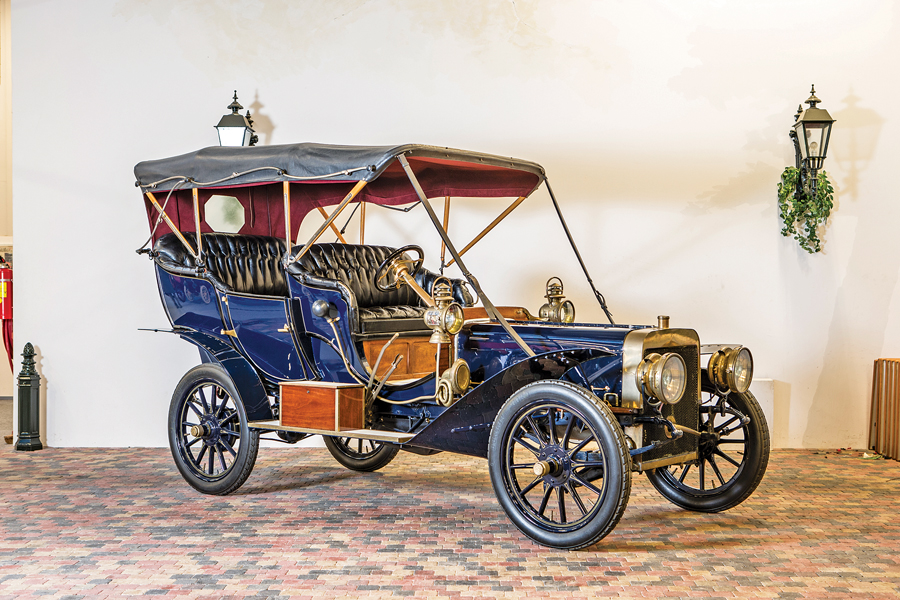No chassis number available
By 1906 there were a number of struggles between entrepreneur Henry Ford and his board — the sort that are so frequent with “start-ups” and particularly in the early days of the motorcar industry.
The battle raged between directors Malcomson and Gray, who were for building a car to satisfy their perception of a growing luxury market, countered by Ford with his own vision for his business.
The Model K in concept mirrored and/or pre-empted the era of Six-Cylinderism, as it has sometimes been referred to. The car arrived around the same time, or even ahead of, luxury cars like those produced by Delaunay-Belleville, Napier and Rolls-Royce in Europe and Peerless and Pierce-Arrow in the United States.
This magnificent Model K is the highlight of the Den Hartogh Collection and rightly so. It dwarfs so many of its predecessors and successors with its incredible presence and striking looks. Owing to the fashion of the day, early Model K cars, such as this one, carry a voluptuous body design, which in the local colloquialism was termed “Tulip.” Cadillac, during the same period, also fitted these bodies to their cars.
The car’s older American restoration has aged a little, but it remains extremely handsome.

